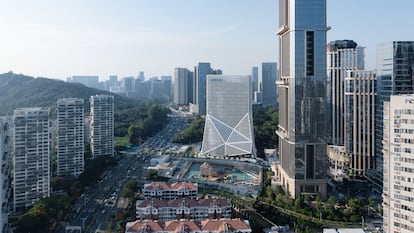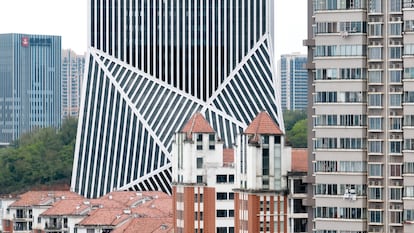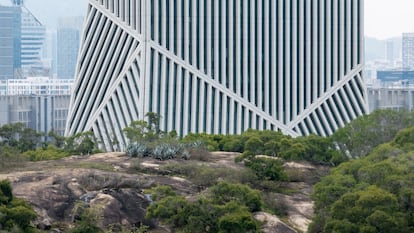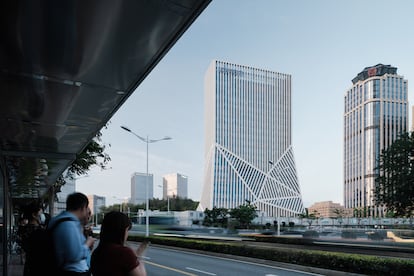OMA studio reinterprets the skyscraper in China once again.


Beyond building icons, such as the China Television Headquarters in Beijing or the Seattle Library in the United States, it is common for the OMA architectural studio to take on a project to rethink not only a form, but above all to reconsider an idea.
This time it happened in Xiamen, a seaport city across from Taiwan in southwest China. There, the Rotterdam-based firm, led this time by Chris van Duijn —in association with local architects Lingsiao Zhang and Chen Lu—has erected a skyscraper that is at once iconic, ambitious, modest, and respectful. How is that possible?

To establish itself among the hills of Xiamen , in an urban district surrounded by both new towers and old hills, the Dutch studio decided to observe the topography and mix it up. Not only is orthogonal geometry combined with faceted geometry, but industrial materials are also combined with artisanal resources—such as the white ceramic strips that adorn and protect the facade.
However, beyond this idea of mixing and matching shapes, volumes, and materials, the building's audacity lies in its foundation. Instead of resting on a pedestal, a platform, or its own shaft, the skyscraper seems rooted in the hills. How does it achieve this?

This is achieved through the use of faceted geometry, which transforms into a sculptural base, formed by 21 triangles, what is generally a flat, geometric platform, for landing rather than for anchoring.
Thus, the 105-meter-high tower sits more organically than geometrically, as if its base had become the foot of a hill. The building then rises, rectilinear, in dialogue with the neighboring towers in Xiamen's financial district . Inside, the floor plans are open and uncluttered, free of columns.

The architects talk about communicating a moment of corporate transformation, the transformation of a Chinese giant, JOMOO, into a global brand. That's why the decision to be rooted in the local environment is important. Chris van Duijn has spoken about that duality that is almost any commitment. In a series of high-rise buildings designed for rapidly developing cities—such as Hangzhou , Shenzhen, or Xiamen itself—the architect considers it important to reinterpret the typology, paying as much attention to the architecture as to the place, and as much attention to high technology as to craftsmanship. An architecture of consensus? It could be. Or a holistic, comprehensive ambition, like that of great architecture that takes care of everything: from the shooter to the city.
EL PAÍS





